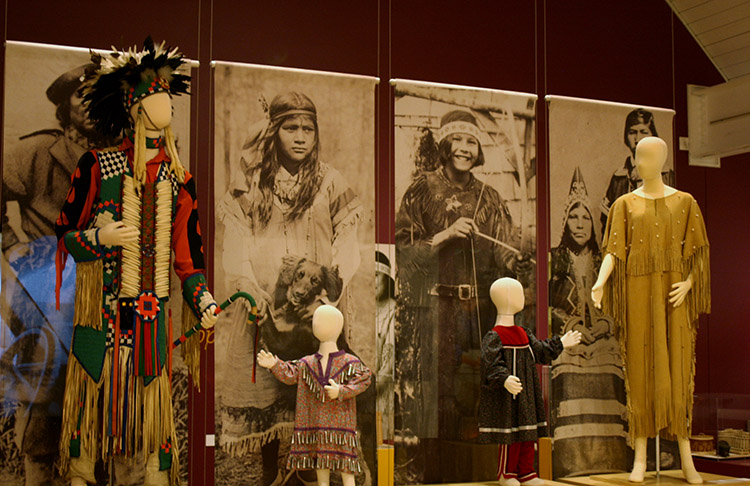Strategic planning may not often be described as thrilling, but for Cinnamon Catlin-Legutko (LA’94), it’s one of the best parts of her job as the president and chief executive officer of the Abbe Museum in Bar Harbor, Maine. “I love imagining a future with a group of people and looking at the reality of what’s feasible,” she says. “It’s very creative work, even though it may not seem like it from the outside.”
Although she studied cultural anthropology and has a distinct affinity for history, Catlin-Legutko places equal emphasis on the necessity of looking ahead. It’s this dichotomy that has enabled her to develop systems that support a variety of provocative, cutting-edge, and socially conscious exhibit and program designs. But thinking and planning strategically hasn’t just allowed her to institute groundbreaking work in her current role — it has laid the foundation for her entire career.
Catlin-Legutko can describe a moment in her first museum job when she realized the kind of leader she did not want to be. This awareness empowered her to identify her strengths and create a framework of career goals. Through an intensive leadership training course and savvy volunteer and consultant work on a local, state, and national level, she began to understand that leadership is a true craft.
The more she became involved with the museum community, the more Catlin-Legutko realized she had the ability to help shape policies and solutions and provide resources, especially for smaller museums. Finding herself presented with keynote invitations and writing opportunities, she felt she was on the right track. “I knew my calling was in small, community-engaged museums, because that’s where the immediate effect of good museum work can be seen,” she says. A gratifying experience came in 2008, when the General Lew Wallace Study & Museum in Crawfordsville, Indiana, where she was the director, was awarded the prestigious National Medal for Museum and Library Service.
“I knew my calling was in small, community-engaged museums, because that’s where the immediate effect of good museum work can be seen”
—Cinnamon Catlin-Legutko

When Catlin-Legutko was approached by the Abbe Museum, whose mission is to inspire new learning about the Wabanaki Native American Nations of Maine, the position seemed perfectly fitting. She appreciated the opportunity to refine her leadership skills even more, demonstrate financial prowess by directing the museum through the national economic crisis, and also draw on her art and native history background. Thanks to her guidance, the Abbe Museum has developed a unique voice in the museum field as it has embarked on a decolonization initiative that is changing the standards for museum governance structures, collections, exhibits, and community involvement. She says the museum’s efforts to create a process of collaboration, privileging native voices, and truth telling have been extremely rewarding. “When you’re really making a difference in someone’s life through education, economic investment, or innovating through initiatives, and you can see a positive outcome, there’s nothing better than that — it’s constant real-time evaluation.”
In addition to her keen executive abilities, Catlin-Legutko possesses a seemingly limitless energy that allows her to serve as the president of the Bar Harbor Chamber of Commerce, the treasurer of the American Alliance of Museums board of directors, and a board member of the Maine Humanities Council and the Island Housing Trust. She says she draws strength from connecting with others and hearing their perspectives and also feels a responsibility to be active in civic matters. “If a museum leader can be seen as a leader in a community — as a solution maker, as a problem solver — then the support will be there when you need it,” she says. “If I want people to sit at my table and help us, then I need to sit at their table, too.” Catlin-Legutko is incredibly grateful that her work has allowed her the space to be creative and innovative and to impact the lives of those around her. “This really is my calling. I’m getting to be the leader I’ve always wanted to be, and that’s an accomplishment of which I’m quite proud.”

